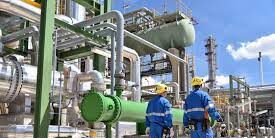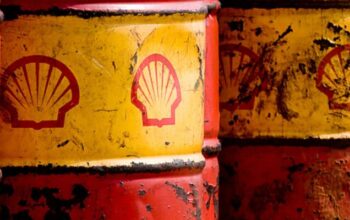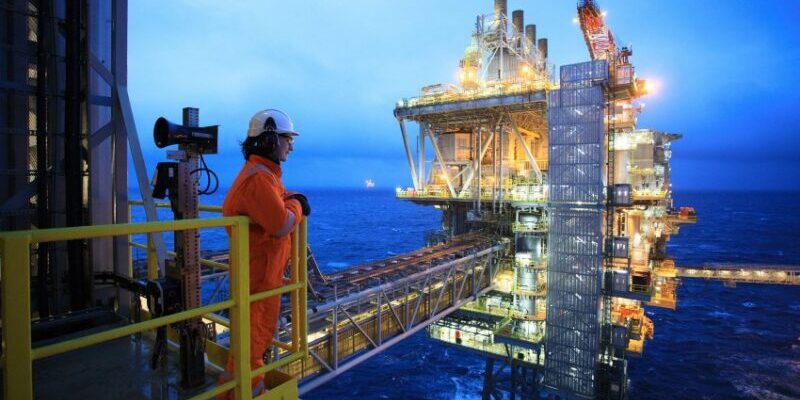Mauritania possesses natural resources of world-class quantity and quality, including gas, solar and wind renewables, and minerals.
These three pillars form an integrated and synergetic strategy adopted by the government to establish the country as an energy and steel hub for the local, regional, African, and international markets.
Within this context, SMH is actively involved in various projects, both in the exploration and development stages.
In terms of exploration, we are collaborating with partners Shell and Qatar Energy in Block C-10, focusing on drilling activities scheduled for this year at the promising Panna Cotta carbonate prospect.
This exploration aims to unlock multi-billion barrel resource plays offshore Mauritania. Additionally, we are partnering with Total Energies for exploration in Block C-15, where encouraging prospects have been identified.
Regarding development, Phase 1 of our GTA project, a unitized asset between Mauritania and Senegal, is progressing well, with approximately 90% completion.
The FPSO Rosso is expected to arrive in Mauritania waters this July. We are also conducting planning and concept studies for GTA Phase 2, with the support of the governments of Mauritania and Senegal, as well as in partnership with Petrosen, bp, and Kosmos.
Our goal is to sanction the project in early 2025, aiming to achieve a production plateau of 10 million tonnes per annum (mtpa) of LNG as quickly as possible.
In the case of the BirAllah gas field, which is entirely located in Mauritania waters and holds over 50 trillion cubic feet (TCF) of gas, we are collaborating with bp and Kosmos on concept studies, leveraging the existing N’Diago Port.
The port in southern Mauritania is intended for use by the LNG plant and associated infrastructure, contributing significantly to local content and gas supply for the domestic market.
Both the BirAllah and GTA Phase 2 projects are aligned to reach a final investment decision (FID) by early 2025.
Furthermore, we have the Banda gas field, which was discovered in 2023 and has estimated resources of up to two TCF.
Originally focused on a gas-to-power scheme, the development plan will now explore over 20 options outlined in the National Gas Master Plan.
Potential avenues include small-scale LNG, compressed gas exports to Europe, gas utilization for fertilizers/chemicals, and gas for the mining industry.
We are open to discussing partnerships with any company interested in developing this shallow and near-shore gas field.
As the world moves towards achieving net-zero emissions, SMH, like many of our partner companies, international oil companies (IOCs), and national oil companies (NOCs), is working with the support of the state to review our status and vision.
We aim to adapt to the new environment and prepare the company for its role in green hydrogen and ammonia projects.
How does SMH intend to maximize the economic benefits of recent gas developments for both the national economy and local communities? What steps is SMH taking or planning to take to ensure the long-term maximization of these benefits?
SMH is committed to maximizing economic benefits from all our projects for the national economy and local communities.
To achieve this, we closely collaborate with our partners to prioritize local recruitment and skills development, as well as encourage the local supply of goods and services.
Our joint ventures (JVs) invest in identifying, coaching, and expanding the number of local entities that currently support or have the potential to support exploration and production activities in the country.
We are developing and updating supplier databases and portals to facilitate access to procurement opportunities.
In collaboration with relevant institutions such as the Ecole Supérieure Polytechnique in Nouakchott, our JVs provide and/or support training and education programs.
Additionally, we implement social and environmental responsibility initiatives through our partnerships to directly benefit the nearby communities of our projects.
These efforts and commitments extend to all our projects, demonstrating our dedication to national development.
In the medium to long term, the country is in the process of adopting a local content strategy that will establish clear guidelines and provide better clarity on how to engage and support the socioeconomic aspects of local content in the extractive industries.
Please provide specific examples of how SMH is committed to supporting local content in the region.
As examples of our initiatives, we are funding and implementing social responsibility programs in collaboration with our GTA partners.
These programs include establishing medical centers and mobile clinics, improving access to clean water, providing training and capacity building, supporting education, promoting fishing, and facilitating entrepreneurship projects for local communities in the N’Diago region. We prioritize empowering women and investing in their self-sufficiency.
Together with committees from the targeted communities, we regularly assess the impact of these programs and explore ways to optimize and expand them to better meet the needs of these communities.
We have begun recruiting individuals from the N’Diago region to support GTA activities, and we are exploring opportunities to expand the scope of such recruitment.
When it comes to procurement for the GTA project, we give priority to sourcing options exclusively from the region to maximize local involvement.
We focus on breaking down contracts into smaller parts to create more opportunities for local companies in Mauritania and Senegal, while maintaining a balanced split between the two countries.
For contracts that require international bidding, we work with the operator to encourage the potential winners, during the Request for Proposal (RFP) stage, to involve local partners and prepare them for future bidding rounds for the same opportunity.
Similar approaches and programs are being implemented and will continue to be implemented by our partnerships in other relevant project areas.
What strategies is SMH employing to attract international and local investors for the development of your projects? Can you explain why it is important for SMH to participate in MSGBC Oil, Gas, & Power 2023?
Mauritania offers diversified opportunities and a favorable legal framework, including sector-specific regulations and an investment code, making it an attractive environment for investment.
SMH actively promotes investment opportunities and projects in the energy sector, including participation in industry forums such as MSGBC Oil, Gas, & Power 2023.
This event allows us to showcase exciting opportunities and engage with potential partners. To facilitate international collaboration, SMH has established a contractual framework based on internationally recognized models such as AIEN forms.
Renowned companies like bp, Shell, Total, Kosmos, Qatar Energy, and others have already established a presence in Mauritania, and we continue to welcome interested companies in the energy sector.
Our participation in MSGBC 2023 not only promotes our energy potential and projects but also demonstrates a successful cooperation model that has expedited the joint development of shared resources in the GTA.
This approach reduces costs and time while building a common understanding of the subsurface of the basin.
Our hope is that the models of cooperation and joint efforts exemplified by the Mauritania-Senegal and SMH-PETROSEN partnerships will be widely shared across the region and the continent, contributing to the economic integration sought by our leaders and people.
![]()




